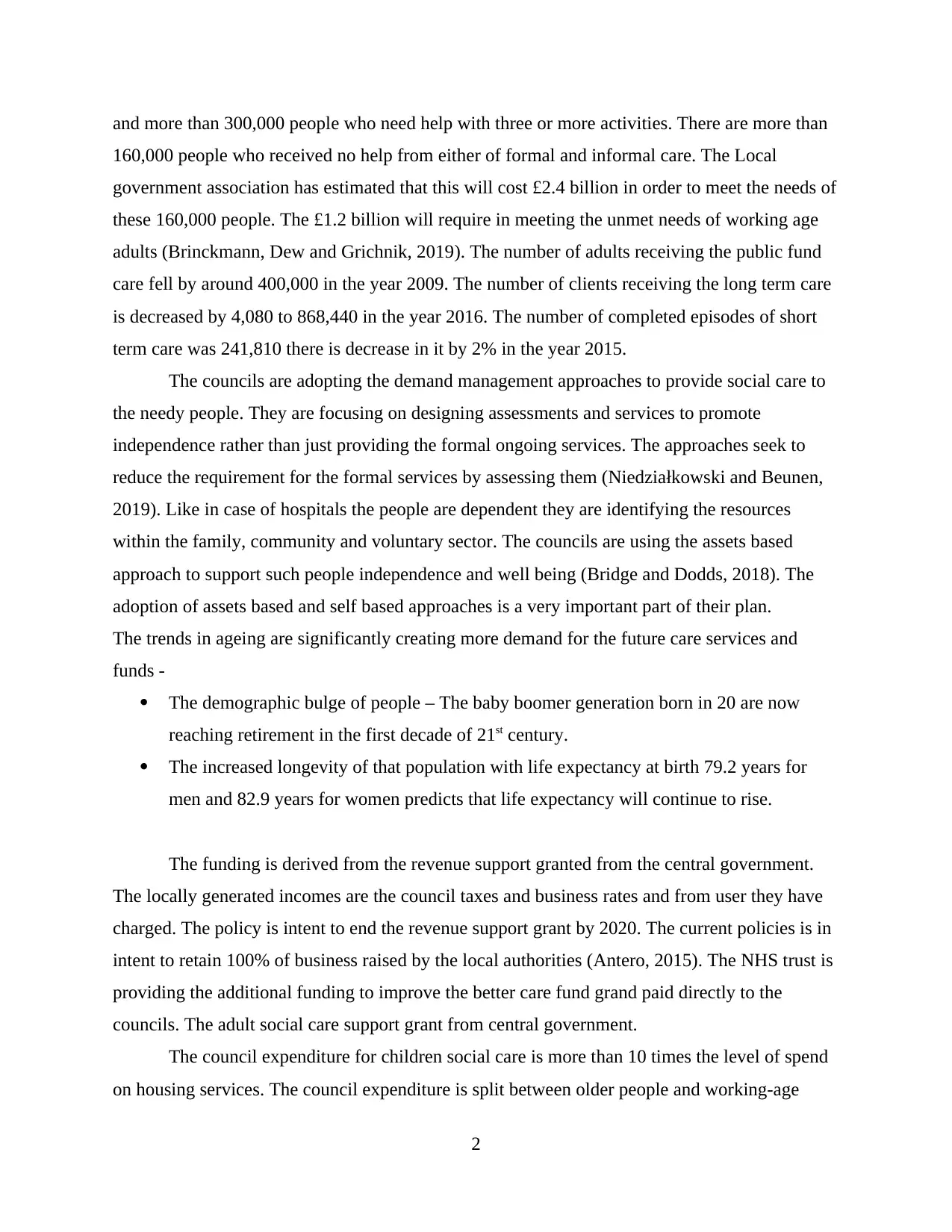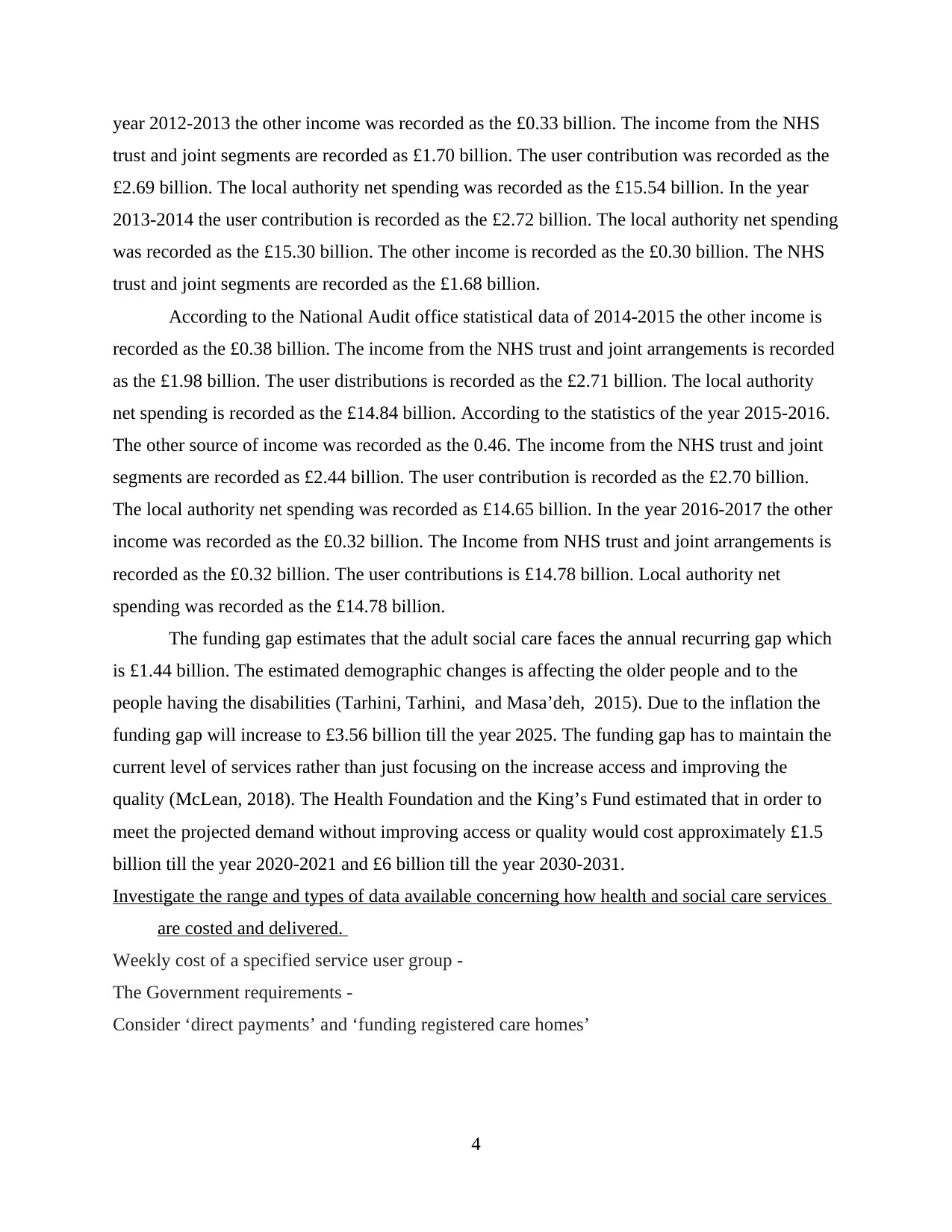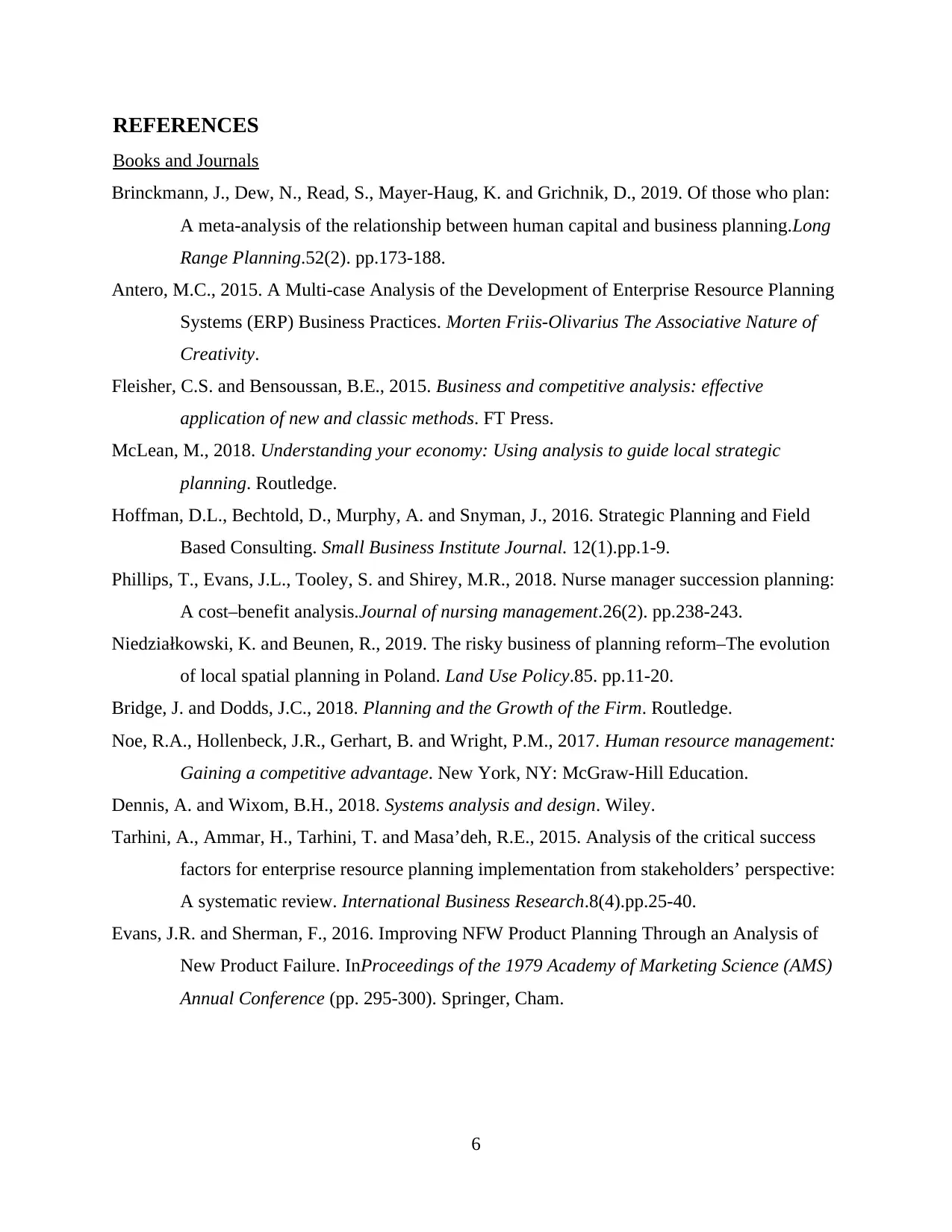Business Analysis and Planning in the Social Care Housing Sector
VerifiedAdded on 2020/10/22
|9
|2346
|180
Report
AI Summary
This report provides a detailed analysis of the social care housing sector in England, focusing on business analysis and planning. It begins with an introduction to the sector, defining social care housing and its importance. The main body of the report examines the relevant laws, including the Health and Social Care Act 2012 and the Equality Act 2010, and their impact on the sector. It explores the legislative history and context in which value for money matters, highlighting the increasing demand for social care services and the associated financial pressures. The report identifies and analyzes various types of information, data, and statistics related to the sector, including spending patterns, funding sources, and demographic trends. It investigates the range and types of data available concerning how health and social care services are costed and delivered, including the cost of specific service user groups and government requirements. The report concludes by summarizing the key findings and implications for future business planning in the social care housing sector. The report includes references to various books and journals.

Business Analysis and
Planning
Planning
Paraphrase This Document
Need a fresh take? Get an instant paraphrase of this document with our AI Paraphraser

Table of Contents
INTRODUCTION...........................................................................................................................1
MAIN BODY...................................................................................................................................1
Social Care Housing sector..........................................................................................................1
Laws that established Social Care housing .................................................................................1
The legislative history and context in which value for money matters.......................................1
Types of information, data or statistics the research has identified.............................................3
Investigate the range and types of data available concerning how health and social care
services are costed and delivered. ...............................................................................................4
CONCLUSION................................................................................................................................5
REFERENCES................................................................................................................................6
INTRODUCTION...........................................................................................................................1
MAIN BODY...................................................................................................................................1
Social Care Housing sector..........................................................................................................1
Laws that established Social Care housing .................................................................................1
The legislative history and context in which value for money matters.......................................1
Types of information, data or statistics the research has identified.............................................3
Investigate the range and types of data available concerning how health and social care
services are costed and delivered. ...............................................................................................4
CONCLUSION................................................................................................................................5
REFERENCES................................................................................................................................6

INTRODUCTION
Business analysis refers to identify the needs of business and determine solutions of
problems regarding business. The planning refers to determining the business plan in order to
achieve a desired goal. Planning is done to achieve future goals of business entity. Whereas
Business Analysis and Planning refers to identify the collection of tasks that need to complete
and ensure that the business analysis done properly and plan is to be made in accordance with
the research. The project report is based on the trend in the social care housing sector in England
as the government is thinking about saving costs and improving efficiency.
The project report will outline the legislative history and context in which value for
money matters. The project report will outline the type of information data & statistics the
research has been identified. The project report will provide the range and types of data available
concerning how health and social care services are costed and deliver. Lastly the report will
provide the conclusion.
MAIN BODY
Social Care Housing sector
Social Care Housing Sector – Social Care Housing Sector defined as the provision of the
personal care, social work and providing social support services to the adults. It acts as a
backbone for the adults by fulfilling there needs arising from illness, disability and poverty.
Laws that established Social Care housing
The Health and Social Care Act 2012 introduces the legal duties for local authorities on
public health function about health inequalities. The Equality Act 2010 established duties for
public sector bodies that sets framework for public sector to take actions in order to reduce
inequalities in England at local and national level (Noe, Hollenbeck and Wright, 2017). The
Social Value Act 2012 includes local authorities and health Sector bodies in order to consider
social, economical and environmental well-being in procurement of services. The Act is creating
social value through reducing health inequalities by taking actions on Social determinates of
health for improving Social Care Housing Sector.
The legislative history and context in which value for money matters.
The estimated numbers of people who have difficulty with activities of daily living are
raising and they do not receive all the help they needed (Dennis and Wixom, 2018). According
to the Age United Kingdom research there are approximately 1.4 million people who need help
1
Business analysis refers to identify the needs of business and determine solutions of
problems regarding business. The planning refers to determining the business plan in order to
achieve a desired goal. Planning is done to achieve future goals of business entity. Whereas
Business Analysis and Planning refers to identify the collection of tasks that need to complete
and ensure that the business analysis done properly and plan is to be made in accordance with
the research. The project report is based on the trend in the social care housing sector in England
as the government is thinking about saving costs and improving efficiency.
The project report will outline the legislative history and context in which value for
money matters. The project report will outline the type of information data & statistics the
research has been identified. The project report will provide the range and types of data available
concerning how health and social care services are costed and deliver. Lastly the report will
provide the conclusion.
MAIN BODY
Social Care Housing sector
Social Care Housing Sector – Social Care Housing Sector defined as the provision of the
personal care, social work and providing social support services to the adults. It acts as a
backbone for the adults by fulfilling there needs arising from illness, disability and poverty.
Laws that established Social Care housing
The Health and Social Care Act 2012 introduces the legal duties for local authorities on
public health function about health inequalities. The Equality Act 2010 established duties for
public sector bodies that sets framework for public sector to take actions in order to reduce
inequalities in England at local and national level (Noe, Hollenbeck and Wright, 2017). The
Social Value Act 2012 includes local authorities and health Sector bodies in order to consider
social, economical and environmental well-being in procurement of services. The Act is creating
social value through reducing health inequalities by taking actions on Social determinates of
health for improving Social Care Housing Sector.
The legislative history and context in which value for money matters.
The estimated numbers of people who have difficulty with activities of daily living are
raising and they do not receive all the help they needed (Dennis and Wixom, 2018). According
to the Age United Kingdom research there are approximately 1.4 million people who need help
1
⊘ This is a preview!⊘
Do you want full access?
Subscribe today to unlock all pages.

Trusted by 1+ million students worldwide

and more than 300,000 people who need help with three or more activities. There are more than
160,000 people who received no help from either of formal and informal care. The Local
government association has estimated that this will cost £2.4 billion in order to meet the needs of
these 160,000 people. The £1.2 billion will require in meeting the unmet needs of working age
adults (Brinckmann, Dew and Grichnik, 2019). The number of adults receiving the public fund
care fell by around 400,000 in the year 2009. The number of clients receiving the long term care
is decreased by 4,080 to 868,440 in the year 2016. The number of completed episodes of short
term care was 241,810 there is decrease in it by 2% in the year 2015.
The councils are adopting the demand management approaches to provide social care to
the needy people. They are focusing on designing assessments and services to promote
independence rather than just providing the formal ongoing services. The approaches seek to
reduce the requirement for the formal services by assessing them (Niedziałkowski and Beunen,
2019). Like in case of hospitals the people are dependent they are identifying the resources
within the family, community and voluntary sector. The councils are using the assets based
approach to support such people independence and well being (Bridge and Dodds, 2018). The
adoption of assets based and self based approaches is a very important part of their plan.
The trends in ageing are significantly creating more demand for the future care services and
funds -
The demographic bulge of people – The baby boomer generation born in 20 are now
reaching retirement in the first decade of 21st century.
The increased longevity of that population with life expectancy at birth 79.2 years for
men and 82.9 years for women predicts that life expectancy will continue to rise.
The funding is derived from the revenue support granted from the central government.
The locally generated incomes are the council taxes and business rates and from user they have
charged. The policy is intent to end the revenue support grant by 2020. The current policies is in
intent to retain 100% of business raised by the local authorities (Antero, 2015). The NHS trust is
providing the additional funding to improve the better care fund grand paid directly to the
councils. The adult social care support grant from central government.
The council expenditure for children social care is more than 10 times the level of spend
on housing services. The council expenditure is split between older people and working-age
2
160,000 people who received no help from either of formal and informal care. The Local
government association has estimated that this will cost £2.4 billion in order to meet the needs of
these 160,000 people. The £1.2 billion will require in meeting the unmet needs of working age
adults (Brinckmann, Dew and Grichnik, 2019). The number of adults receiving the public fund
care fell by around 400,000 in the year 2009. The number of clients receiving the long term care
is decreased by 4,080 to 868,440 in the year 2016. The number of completed episodes of short
term care was 241,810 there is decrease in it by 2% in the year 2015.
The councils are adopting the demand management approaches to provide social care to
the needy people. They are focusing on designing assessments and services to promote
independence rather than just providing the formal ongoing services. The approaches seek to
reduce the requirement for the formal services by assessing them (Niedziałkowski and Beunen,
2019). Like in case of hospitals the people are dependent they are identifying the resources
within the family, community and voluntary sector. The councils are using the assets based
approach to support such people independence and well being (Bridge and Dodds, 2018). The
adoption of assets based and self based approaches is a very important part of their plan.
The trends in ageing are significantly creating more demand for the future care services and
funds -
The demographic bulge of people – The baby boomer generation born in 20 are now
reaching retirement in the first decade of 21st century.
The increased longevity of that population with life expectancy at birth 79.2 years for
men and 82.9 years for women predicts that life expectancy will continue to rise.
The funding is derived from the revenue support granted from the central government.
The locally generated incomes are the council taxes and business rates and from user they have
charged. The policy is intent to end the revenue support grant by 2020. The current policies is in
intent to retain 100% of business raised by the local authorities (Antero, 2015). The NHS trust is
providing the additional funding to improve the better care fund grand paid directly to the
councils. The adult social care support grant from central government.
The council expenditure for children social care is more than 10 times the level of spend
on housing services. The council expenditure is split between older people and working-age
2
Paraphrase This Document
Need a fresh take? Get an instant paraphrase of this document with our AI Paraphraser

adults at 51 per cent to 49 per cent. The councils are concerned about the cost pressure of
working adults in comparison to people who are 12 % more concern about the cost pressure of
the older people. According to the National Audit office (NAO) the local authority spending on
adult care is decrease by 3.3% in the year 2011. The net local authority spending on adult social
care is decreased by the 8%. Through this reduction there is increase in the number of the older
people and disable people. 12 % are concerned about the cost pressures of the older people
(Phillips, Evans and Shirey, 2018). The National Health Care service was challenged through the
Better Care fund. There is small reduction in comparison to long term spending reductions for
the other services (Fleisher and Bensoussan, 2015). The 45.6 % is for housing and 37.1% is for
highways and transport. The real terms spending on children's social care is increased by 3.2%.
The NAO estimates that the total size of the self funding market on social care in
England is £10.9 in the year 2017. The United Kingdom home-care association estimates that the
expenditures by the self funders on home care was £623 million in the year 2015. The
competition and markets authority estimates that the in the year 2017, 41% care home residents
funded themselves by 49% receiving the council funding (Hoffman, Bechtold and Snyman,
2016). The National Health Service funds is remaining the 10%. The insurance funds are very
limited to pay the future social care costs. The option of personal care is arising high costs which
is not affordable by the people. Very few people are qualified for the publicly supported fund.
The free personal care based model applied in Scotland would occur the cost of approximately
£7 billion till the year 2021 and £14 billion till the year 2031.There is high demand for the
money to be invested in the Adult Social care. The Health foundation and the king fund
estimated that the projected demand will cost £1.5 billion.
Types of information, data or statistics the research has identified
According to the National Audit office analysis source of local authority spending in
which the other income was recorded in the year 2010-2011 as the £0.49 billion. The income
from the NHS trust and joint segments are recorded as £2.07 billion. The user contribution is
recorded as the £2.68 billion. The local authority net spending was recorded as the £16.06 billion
(Evans and Sherman, 2016). In the year 2011 the other income was recorded as the £0.37
billion. In the year 2011-2012 the other income was recorded as the £0.37 billion whereas the
NHS trust and joint segments are recorded as the £1.58 billion. The user contribution is recorded
as the £2.69 billion. The local authority net spending was recorded as the £15.99 billion. In the
3
working adults in comparison to people who are 12 % more concern about the cost pressure of
the older people. According to the National Audit office (NAO) the local authority spending on
adult care is decrease by 3.3% in the year 2011. The net local authority spending on adult social
care is decreased by the 8%. Through this reduction there is increase in the number of the older
people and disable people. 12 % are concerned about the cost pressures of the older people
(Phillips, Evans and Shirey, 2018). The National Health Care service was challenged through the
Better Care fund. There is small reduction in comparison to long term spending reductions for
the other services (Fleisher and Bensoussan, 2015). The 45.6 % is for housing and 37.1% is for
highways and transport. The real terms spending on children's social care is increased by 3.2%.
The NAO estimates that the total size of the self funding market on social care in
England is £10.9 in the year 2017. The United Kingdom home-care association estimates that the
expenditures by the self funders on home care was £623 million in the year 2015. The
competition and markets authority estimates that the in the year 2017, 41% care home residents
funded themselves by 49% receiving the council funding (Hoffman, Bechtold and Snyman,
2016). The National Health Service funds is remaining the 10%. The insurance funds are very
limited to pay the future social care costs. The option of personal care is arising high costs which
is not affordable by the people. Very few people are qualified for the publicly supported fund.
The free personal care based model applied in Scotland would occur the cost of approximately
£7 billion till the year 2021 and £14 billion till the year 2031.There is high demand for the
money to be invested in the Adult Social care. The Health foundation and the king fund
estimated that the projected demand will cost £1.5 billion.
Types of information, data or statistics the research has identified
According to the National Audit office analysis source of local authority spending in
which the other income was recorded in the year 2010-2011 as the £0.49 billion. The income
from the NHS trust and joint segments are recorded as £2.07 billion. The user contribution is
recorded as the £2.68 billion. The local authority net spending was recorded as the £16.06 billion
(Evans and Sherman, 2016). In the year 2011 the other income was recorded as the £0.37
billion. In the year 2011-2012 the other income was recorded as the £0.37 billion whereas the
NHS trust and joint segments are recorded as the £1.58 billion. The user contribution is recorded
as the £2.69 billion. The local authority net spending was recorded as the £15.99 billion. In the
3

year 2012-2013 the other income was recorded as the £0.33 billion. The income from the NHS
trust and joint segments are recorded as £1.70 billion. The user contribution was recorded as the
£2.69 billion. The local authority net spending was recorded as the £15.54 billion. In the year
2013-2014 the user contribution is recorded as the £2.72 billion. The local authority net spending
was recorded as the £15.30 billion. The other income is recorded as the £0.30 billion. The NHS
trust and joint segments are recorded as the £1.68 billion.
According to the National Audit office statistical data of 2014-2015 the other income is
recorded as the £0.38 billion. The income from the NHS trust and joint arrangements is recorded
as the £1.98 billion. The user distributions is recorded as the £2.71 billion. The local authority
net spending is recorded as the £14.84 billion. According to the statistics of the year 2015-2016.
The other source of income was recorded as the 0.46. The income from the NHS trust and joint
segments are recorded as £2.44 billion. The user contribution is recorded as the £2.70 billion.
The local authority net spending was recorded as £14.65 billion. In the year 2016-2017 the other
income was recorded as the £0.32 billion. The Income from NHS trust and joint arrangements is
recorded as the £0.32 billion. The user contributions is £14.78 billion. Local authority net
spending was recorded as the £14.78 billion.
The funding gap estimates that the adult social care faces the annual recurring gap which
is £1.44 billion. The estimated demographic changes is affecting the older people and to the
people having the disabilities (Tarhini, Tarhini, and Masa’deh, 2015). Due to the inflation the
funding gap will increase to £3.56 billion till the year 2025. The funding gap has to maintain the
current level of services rather than just focusing on the increase access and improving the
quality (McLean, 2018). The Health Foundation and the King’s Fund estimated that in order to
meet the projected demand without improving access or quality would cost approximately £1.5
billion till the year 2020-2021 and £6 billion till the year 2030-2031.
Investigate the range and types of data available concerning how health and social care services
are costed and delivered.
Weekly cost of a specified service user group -
The Government requirements -
Consider ‘direct payments’ and ‘funding registered care homes’
4
trust and joint segments are recorded as £1.70 billion. The user contribution was recorded as the
£2.69 billion. The local authority net spending was recorded as the £15.54 billion. In the year
2013-2014 the user contribution is recorded as the £2.72 billion. The local authority net spending
was recorded as the £15.30 billion. The other income is recorded as the £0.30 billion. The NHS
trust and joint segments are recorded as the £1.68 billion.
According to the National Audit office statistical data of 2014-2015 the other income is
recorded as the £0.38 billion. The income from the NHS trust and joint arrangements is recorded
as the £1.98 billion. The user distributions is recorded as the £2.71 billion. The local authority
net spending is recorded as the £14.84 billion. According to the statistics of the year 2015-2016.
The other source of income was recorded as the 0.46. The income from the NHS trust and joint
segments are recorded as £2.44 billion. The user contribution is recorded as the £2.70 billion.
The local authority net spending was recorded as £14.65 billion. In the year 2016-2017 the other
income was recorded as the £0.32 billion. The Income from NHS trust and joint arrangements is
recorded as the £0.32 billion. The user contributions is £14.78 billion. Local authority net
spending was recorded as the £14.78 billion.
The funding gap estimates that the adult social care faces the annual recurring gap which
is £1.44 billion. The estimated demographic changes is affecting the older people and to the
people having the disabilities (Tarhini, Tarhini, and Masa’deh, 2015). Due to the inflation the
funding gap will increase to £3.56 billion till the year 2025. The funding gap has to maintain the
current level of services rather than just focusing on the increase access and improving the
quality (McLean, 2018). The Health Foundation and the King’s Fund estimated that in order to
meet the projected demand without improving access or quality would cost approximately £1.5
billion till the year 2020-2021 and £6 billion till the year 2030-2031.
Investigate the range and types of data available concerning how health and social care services
are costed and delivered.
Weekly cost of a specified service user group -
The Government requirements -
Consider ‘direct payments’ and ‘funding registered care homes’
4
⊘ This is a preview!⊘
Do you want full access?
Subscribe today to unlock all pages.

Trusted by 1+ million students worldwide

CONCLUSION
5
5
Paraphrase This Document
Need a fresh take? Get an instant paraphrase of this document with our AI Paraphraser

REFERENCES
Books and Journals
Brinckmann, J., Dew, N., Read, S., Mayer-Haug, K. and Grichnik, D., 2019. Of those who plan:
A meta-analysis of the relationship between human capital and business planning.Long
Range Planning.52(2). pp.173-188.
Antero, M.C., 2015. A Multi-case Analysis of the Development of Enterprise Resource Planning
Systems (ERP) Business Practices. Morten Friis-Olivarius The Associative Nature of
Creativity.
Fleisher, C.S. and Bensoussan, B.E., 2015. Business and competitive analysis: effective
application of new and classic methods. FT Press.
McLean, M., 2018. Understanding your economy: Using analysis to guide local strategic
planning. Routledge.
Hoffman, D.L., Bechtold, D., Murphy, A. and Snyman, J., 2016. Strategic Planning and Field
Based Consulting. Small Business Institute Journal. 12(1).pp.1-9.
Phillips, T., Evans, J.L., Tooley, S. and Shirey, M.R., 2018. Nurse manager succession planning:
A cost–benefit analysis.Journal of nursing management.26(2). pp.238-243.
Niedziałkowski, K. and Beunen, R., 2019. The risky business of planning reform–The evolution
of local spatial planning in Poland. Land Use Policy.85. pp.11-20.
Bridge, J. and Dodds, J.C., 2018. Planning and the Growth of the Firm. Routledge.
Noe, R.A., Hollenbeck, J.R., Gerhart, B. and Wright, P.M., 2017. Human resource management:
Gaining a competitive advantage. New York, NY: McGraw-Hill Education.
Dennis, A. and Wixom, B.H., 2018. Systems analysis and design. Wiley.
Tarhini, A., Ammar, H., Tarhini, T. and Masa’deh, R.E., 2015. Analysis of the critical success
factors for enterprise resource planning implementation from stakeholders’ perspective:
A systematic review. International Business Research.8(4).pp.25-40.
Evans, J.R. and Sherman, F., 2016. Improving NFW Product Planning Through an Analysis of
New Product Failure. InProceedings of the 1979 Academy of Marketing Science (AMS)
Annual Conference (pp. 295-300). Springer, Cham.
6
Books and Journals
Brinckmann, J., Dew, N., Read, S., Mayer-Haug, K. and Grichnik, D., 2019. Of those who plan:
A meta-analysis of the relationship between human capital and business planning.Long
Range Planning.52(2). pp.173-188.
Antero, M.C., 2015. A Multi-case Analysis of the Development of Enterprise Resource Planning
Systems (ERP) Business Practices. Morten Friis-Olivarius The Associative Nature of
Creativity.
Fleisher, C.S. and Bensoussan, B.E., 2015. Business and competitive analysis: effective
application of new and classic methods. FT Press.
McLean, M., 2018. Understanding your economy: Using analysis to guide local strategic
planning. Routledge.
Hoffman, D.L., Bechtold, D., Murphy, A. and Snyman, J., 2016. Strategic Planning and Field
Based Consulting. Small Business Institute Journal. 12(1).pp.1-9.
Phillips, T., Evans, J.L., Tooley, S. and Shirey, M.R., 2018. Nurse manager succession planning:
A cost–benefit analysis.Journal of nursing management.26(2). pp.238-243.
Niedziałkowski, K. and Beunen, R., 2019. The risky business of planning reform–The evolution
of local spatial planning in Poland. Land Use Policy.85. pp.11-20.
Bridge, J. and Dodds, J.C., 2018. Planning and the Growth of the Firm. Routledge.
Noe, R.A., Hollenbeck, J.R., Gerhart, B. and Wright, P.M., 2017. Human resource management:
Gaining a competitive advantage. New York, NY: McGraw-Hill Education.
Dennis, A. and Wixom, B.H., 2018. Systems analysis and design. Wiley.
Tarhini, A., Ammar, H., Tarhini, T. and Masa’deh, R.E., 2015. Analysis of the critical success
factors for enterprise resource planning implementation from stakeholders’ perspective:
A systematic review. International Business Research.8(4).pp.25-40.
Evans, J.R. and Sherman, F., 2016. Improving NFW Product Planning Through an Analysis of
New Product Failure. InProceedings of the 1979 Academy of Marketing Science (AMS)
Annual Conference (pp. 295-300). Springer, Cham.
6

Online
[Online]. Available through : <>.
[Online]. Available through : <>.
7
[Online]. Available through : <>.
[Online]. Available through : <>.
7
⊘ This is a preview!⊘
Do you want full access?
Subscribe today to unlock all pages.

Trusted by 1+ million students worldwide
1 out of 9
Related Documents
Your All-in-One AI-Powered Toolkit for Academic Success.
+13062052269
info@desklib.com
Available 24*7 on WhatsApp / Email
![[object Object]](/_next/static/media/star-bottom.7253800d.svg)
Unlock your academic potential
Copyright © 2020–2025 A2Z Services. All Rights Reserved. Developed and managed by ZUCOL.

